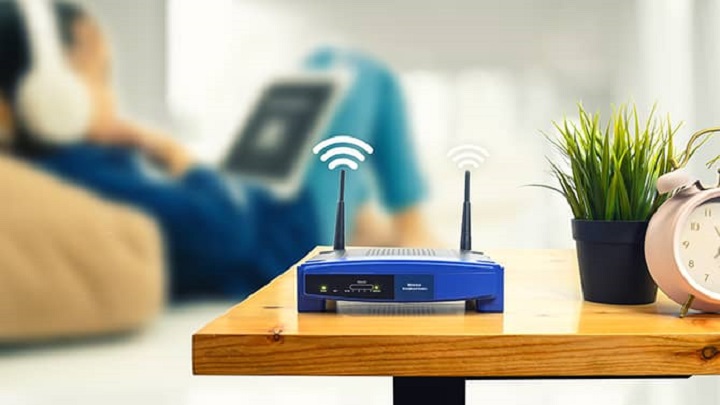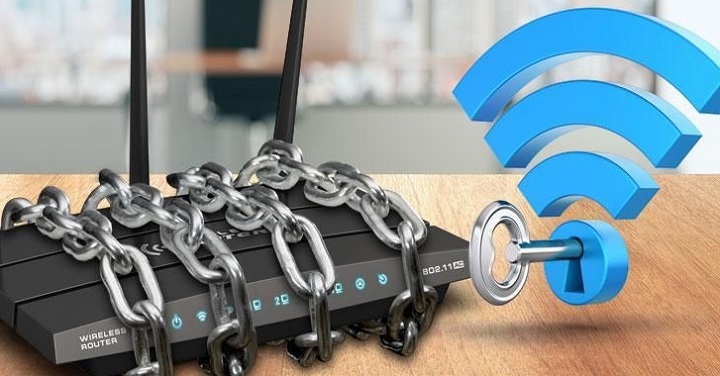Today, most people have their own Wi-Fi networks but don’t know how to protect them. Here you’ll learn how to secure your Wi-Fi.
To protect your privacy, you must also know how to secure your network and data transmitting. To reach this goal, you don’t need to be a professional IT technician since modems’ interfaces are offered with almost no complexities, and only with a few clicks will you find any guide you like on the web. If you need to learn how to secure your home Wi-Fi network, this guide from Tech Trends can help you.
How to Secure Your Wi-Fi; A Comprehensive Guide

If you want to learn something deeply, first, you must get familiar with its structure, and learning how to secure your home Wi-Fi network is no exception. So the first questions are: 1. what is a Wi-Fi network? 2. How does Wi-Fi work? And 3. How to get Wi-Fi at home?
Well, a WiFi network is essentially an internet connection imparted to several gadgets in a home or business using a wireless router. The router is connected straightforwardly with your internet modem and act as a hub to broadcast the internet signal to all your Wi-Fi empowered gadgets. This gives you the adaptability to remain connected to the internet for however long you’re inside your network coverage area.
Wi-Fi, frequently alluded to as WiFi, wifi, wi-fi, or wi fi, is often considered short for Wireless Fidelity; however, there is nothing of the sort. A marketing firm made the term because the wireless business was searching for an easy-to-understand name to allude to some not so easy to understand innovation known as IEEE 802.11. And, the name stuck.
What’s more, regarding its working method, Wi-Fi utilizes radio waves to transmit data from your wireless router to your Wi-Fi-empowered gadgets like your TV, cell phone, tablet, and PC. Since they communicate with one another over airwaves, your devices and personal data can become vulnerable against hackers, cyber-attacks and other threats.
This is particularly evident when you connect to a public Wi-Fi network at places like a restaurant or airport. Whenever the situation allows, it’s ideal to connect to a wireless network that is password protected or a personal hotspot.
Now before getting into how to secure your Wi-Fi, lets see how we can get it first. There are multiple ways of getting wireless service at your home, and most rely upon geological area and accessibility. Most urban and suburban regions offer most of these services, with 5G Home Internet close to the corner. Rural regions will often offer satellite and 4G LTE Home Internet. On the off chance that you have wired internet service, you can set up your own Wifi network at home.
By connecting a router to your modem, you can impart your web connection with all your Wi-Fi-enabled gadgets in range. If your home has two levels, concrete walls, or random dead zones, adding a Wi-Fi extender that relays the wireless signal to these areas can have a significant effect.
Remember that as the number of your devices develops, so does the demand for bandwidth. To keep your gadgets running at maximum speeds, you might need to upgrade your internet speed plan. Some providers offer several internet services going from DSL and fiber to 5G Home Internet, contingent upon your location. Now that you know the details, lets go for the best ways to protect your home network security.
The Best Ways to Protect Your Home Network Security

Encrypt your network. Encrypting scrambles the information sent through your network. That makes it harder for others to see what you’re doing or get your personal information. You encrypt your network by updating your router settings to either WPA3 Personal or WPA2 Personal. WPA3 is the more up-to-date — and ideal — encryption available, but both will work to scramble your information.
How to secure your Wi-Fi when having an old Router, or not having have WPA3 or WPA2 choices on your router? Older routers have WPA and WEP, which are obsolete and not secure. If those are the only choices available, update your router software. Then check again to see whether WPA2 or WPA3 are accessible. If they’re not, consider getting a new router to keep your information secure.
Change your router’s preset passwords. Some routers come with preset passwords out of the box. Nevertheless, hackers can find these passwords, so changing them into something more complex is vital. There are two passwords on your router that you must to reset.
- The Wi-Fi network password: this is the one you use to connect your gadgets to the network. A unique and secure Wi-Fi network password keeps outsiders from getting onto your network.
- The router admin password: this is the one that gives you access to the administrative side of the gadget. There, you can do things like change settings (including the Wi-Fi network password). If a hacker figured out how to log in to the admin side of your router, the hacker could change the settings (including your Wi-Fi password). That would undo any other security steps you might take.
To find guidelines for changing your router’s admin and network passwords, first, find the name of your router’s manufacturer. Then go online and search for “how to change [your router manufacturer] admin password” and “how to change [your router manufacturer] Wi-Fi network password.” Still, having difficulty? Contact the manufacturer.
Keep your router up-to-date. Before you set up a new router or make updates to your current one, visit the producer’s site to check whether there’s a more up-to-date variant of the software accessible for download. To ensure you hear about the latest version, register your router with the producer, and sign up to get updates. If you got your router from your Internet Service Provider (ISP), like Verizon or Comcast, check with your ISP to see whether it sends automatic updates.
Turn off “remote management,” WPS, and Universal Plug and Play (UPnP) highlights. It is another trick on how to secure your Wi-Fi. Some routers have highlights that can be convenient but weaken your network security. For instance, remote access to your router’s controls permits you to change settings over the web. WPS allows you to press a button on the router to connect a gadget to the internet instead of entering the network password.
Lastly, UPnP allows your devices to find one another on the network. These highlights might make it more straightforward to, say, add gadgets to your network or let guests utilize your Wi-Fi — yet they can make your network less secure.
Set up a guest network. Many routers let you set up a guest network with a different name and password. It’s a decent security move for two reasons:
- Having a separate login implies fewer individuals have your main Wi-Fi network password, and
- If a guest (unknowingly) has malware on their telephone or tablet, it will not get onto your main network and your gadgets.
Log out as administrator. Log out as administrator whenever you’ve set up your router or done changing settings. When you’re logged in as an administrator, you can change passwords and, in any case, manage settings that control the security of your network. If a hacker got into your administrator account, they could get into your network and gadgets.
Protect your gadgets. Similarly, as hackers can get to your data through unsecured networks, they can likewise get to your network through unsecured gadgets. Find ways to secure your devices.
How to Secure Your Home Wireless Network from Hackers

Here are a few critical steps that help you to learn how to secure your home wireless network from hackers.
- Change the default name of your home Wi-Fi
First, change the SSID (service set identifier), or name of your home Wi-Fi network. Many producers give all their wireless routers a default SSID. By and large, it is the producer’s name. When a computer searches for and shows the wireless networks close by, it lists each network that openly broadcasts its SSID. This gives a hacker an ideal opportunity of breaking into your network. It is better to change the network’s SSID to something that doesn’t disclose any personal information.
- Make your wireless network password unique and solid
Most wireless routers come pre-set with a default password. This default password is easy to figure out by hackers, particularly if they know the router’s manufacturer. While choosing a decent password for your wireless network, ensure it contains at least 20 characters, including numbers, letters, and symbols. The more complicated your password, the more troublesome it is for hackers to break into your network.
- Enable network encryption
Almost all wireless routers come with an encryption highlight. For most routers, however, it is turned off by default. Turning on your wireless router’s encryption setting can assist with securing your network. Ensure you turn it on following your broadband provider installs the router. Of the many types of encryption accessible, the latest and most viable is “WPA3.”
- Turn off network name broadcasting
While utilizing a wireless router at home, it is suggested that you disable network name broadcasting to the general public. When close-by clients attempt to find a Wi-Fi network, their gadget will show a rundown of neighboring networks from which they can choose. If you disable name broadcasting, however, your network won’t appear, keeping your Wi-Fi connection invisible to the individuals who don’t know to search for it.
This highlight is valuable for businesses, libraries, hotels, and restaurants that want to offer wireless internet access to their clients. Yet, it is unnecessary for a private wireless network, including your home Wi-Fi network.
- Keep your router software up to date
Sometimes, a router’s firmware, similar to any other software, contains blemishes that can become significant weaknesses except if producers’ firmware updates immediately fix them. Continuously install the most recent software available for your router and download the most recent security fixes immediately. This will increase the chances that hackers won’t be able to get to your Wi-Fi network.
- Ensure you have a good firewall
A “firewall” is designed to safeguard computers from malware, viruses, and other harmful intrusions. Wireless routers, for the most part, contain built-in firewalls yet are at times shipped with these firewalls turned off. Make sure that your wireless router’s firewall is turned on. If your router doesn’t have such a firewall, ensure you install a decent firewall solution to your system to guard against malevolent access endeavors on your wireless network.
- Use VPNs to get to your network
A virtual private network, or VPN, is a gathering of computers or networks that work together over the Internet. You can utilize VPNs, such as Norton Secure VPN, as a technique to secure and encrypt your communications. When you connect to a VPN, a VPN client is launched on your computer. When you log in with your credentials, your computer exchanges keys with another server. When the two computers have verified each other as authentic, all your Internet communication is encrypted and stowed away from outside prying.
In particular, check what gadgets connect to your home network and ensure they have dependable security software installed against viruses and spyware.
The Best Tips to Protect Your Home Wi-Fi Network

While first setting up your home network, it’s essential to prep with security in mind. An unprotected network is susceptible to security breaches and hackers that might steal banking info, credit cards, Social Security numbers, and much more. Never dread! Network security doesn’t have to be troublesome. Follow these five quick moves to increase your security. The followings are the best tips to protect your home Wi-Fi network.
- Fortify your Wi-Fi password.
While setting up your network, make sure to create a bomber password — something simple to recall but complex enough, so no hackers would want to touch it.
- Change your router password.
Go into your router’s settings in any internet browser. Contingent upon the type of router, you might have a default password that applies to all routers of a similar sort. Change your router password from the default to increase your network security.
- Change your IP address.
You may not know it, but your router comes shipped with a default IP address. You can go into the router settings and change it to any series of numbers you want. A non-default IP address is an additional line of defense to annoy a potential hacker.
- Update your router.
Ensure you often check and update your router’s drivers. At times this is pretty much as straightforward as a quick restart. If that doesn’t get the job done, check online to ensure your router is up to date..
- Change just what you know.
Configuring other settings in your router, particularly if you are not familiar with them, may leave you more susceptible to breaches. Try and adhere to the essentials except if you need to change different settings.
Related articles:
.
Source: Tech Trends